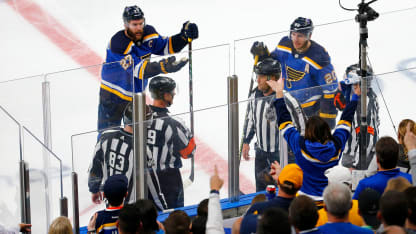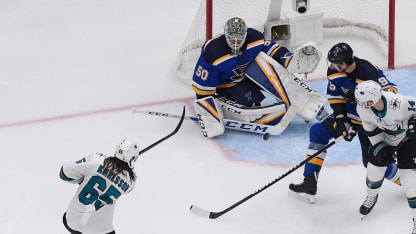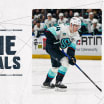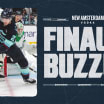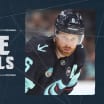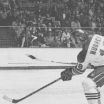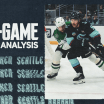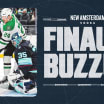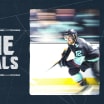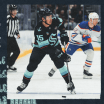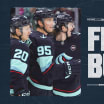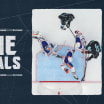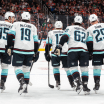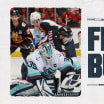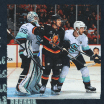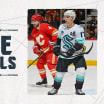The player can even push the dropped puck along the ice with his hand and, according to the NHL "Official Rules" book, "the play shall not be stopped unless in the opinion of the referee, the player has directed the puck to a teammate."
Here's where the details are important: If the hand pass is between two players in their defensive zone (goal end), then play is not stopped. If the hand pass is performed by teammates in the offensive zone (other team's goal end) or neutral zone (center ice), then play is whistled dead and there will be a faceoff. The exact faceoff circle is determined by the referee to make sure there is no advantage to the offending player's team.
One more no-no from the NHL rulebook for all players, defenders or attackers: "If the player catches it and skates with it, either to avoid a check or to gain a territorial advantage over his opponent, a minor penalty shall be assessed for "closing his hand on the puck."
Hard stop. Rewind to Game 4 of last spring's Western Conference Final. In overtime, with the San Jose attacking in the St. Louis zone, Sharks forward Timo Meier swatted a deflected puck in mid-air toward the goal and teammate Gustav Nyquist, who then passed to Eric Karlsson for an overtime winning goal. The Sharks won 5-4 and took a two games to one lead in the series that determined which team advanced to the Stanley Cup Final.
As it turns out, no hand pass was called on the play by the on-ice officials. The play, according to last season's rulebook, was not reviewable for video replay officials. The Blues, from goalie Jordan Binnington to GM Doug Armstrong were understandably demonstrative and upset.
